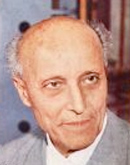

Arturo Danusso
*9. 9. 1880 – Priocca, Italy
†5. 12. 1968 – Milan, Italy
Biography
Arturo Danusso was an Italian engineer and politician. At the age of 22, he graduated with honors in civil engineering from the Regio Politecnico di Torino and immediately joined the engineering office of Porcheddu Ing. G.A. in Turin, which was the only Italian company licensed to use the Hennebique system for reinforced concrete. In 1906, he married Dina Mazzarova (1883-1967). In 1907, he designed a bridge over the Astico stream near Calvene. After the earthquake in Messina in 1908, he presented a study on earthquake engineering to the Society of Engineers and Architects in Turin, which was published the following year. He then participated in the design of the Risorgimento bridge in Rome (completed in 1911) and in the reconstruction of the Campanile of Saint Mark in Venice, which had collapsed in 1902. In 1915, he won the competition for the chair of structural mechanics at the Milan Polytechnic, where he taught until 1950. In 1931, he added a section on "tests, models, and structures" to the materials testing laboratory to specifically test what could be derived from technical calculations, and in the following years, other sections: in 1933, a section on photoelasticity; in 1935, a section on "large models" for testing dams; and in 1939, equipment for testing pressure pipes. In 1938, he also collaborated on discussing the foundations of the Palazzo dei Congressi in the Roman district of EUR.
After World War II, he became the director of the engineers' union for the province of Milan and was elected a city councilor. He was also involved in Catholic organizations and served as president of the Rotary Club from 1948 to 1949.
As a consultant, he participated in contracts to assess the stability of significant historical works (the tower in Pisa, the bell tower of the Basilica of Sant'Ambrogio, the dome of the Basilica of San Gaudenzio in Novara, and the Milan Cathedral).
His research continued to focus mainly on the static and dynamic behavior of reinforced concrete structures. In 1946, he was appointed to lead the new "Center for Theoretical and Experimental Research on Structural Stability." In 1948, he designed 232-meter-high masts to facilitate crossing the Strait of Messina with electrical lines. In 1950, he ended his teaching career due to reaching retirement age. In 1955, he was appointed Emeritus Professor at an international conference on plasticity in construction. In 1967, the newly established International Center for Seismic Engineering at the Milan Polytechnic was named after him.
In the 1950s, he collaborated on the design of the first three skyscrapers in Milan: the 109-meter-high Torre GalFa, the 106-meter-high Torre Velasca, and the 127-meter-high Pirelli skyscraper.
Arturo Danusso was an Italian engineer and politician. At the age of 22, he graduated with honors in civil engineering from the Regio Politecnico di Torino and immediately joined the engineering office of Porcheddu Ing. G.A. in Turin, which was the only Italian company licensed to use the Hennebique system for reinforced concrete. In 1906, he married Dina Mazzarova (1883-1967). In 1907, he designed a bridge over the Astico stream near Calvene. After the earthquake in Messina in 1908, he presented a study on earthquake engineering to the Society of Engineers and Architects in Turin, which was published the following year. He then participated in the design of the Risorgimento bridge in Rome (completed in 1911) and in the reconstruction of the Campanile of Saint Mark in Venice, which had collapsed in 1902. In 1915, he won the competition for the chair of structural mechanics at the Milan Polytechnic, where he taught until 1950. In 1931, he added a section on "tests, models, and structures" to the materials testing laboratory to specifically test what could be derived from technical calculations, and in the following years, other sections: in 1933, a section on photoelasticity; in 1935, a section on "large models" for testing dams; and in 1939, equipment for testing pressure pipes. In 1938, he also collaborated on discussing the foundations of the Palazzo dei Congressi in the Roman district of EUR.
After World War II, he became the director of the engineers' union for the province of Milan and was elected a city councilor. He was also involved in Catholic organizations and served as president of the Rotary Club from 1948 to 1949.
As a consultant, he participated in contracts to assess the stability of significant historical works (the tower in Pisa, the bell tower of the Basilica of Sant'Ambrogio, the dome of the Basilica of San Gaudenzio in Novara, and the Milan Cathedral).
His research continued to focus mainly on the static and dynamic behavior of reinforced concrete structures. In 1946, he was appointed to lead the new "Center for Theoretical and Experimental Research on Structural Stability." In 1948, he designed 232-meter-high masts to facilitate crossing the Strait of Messina with electrical lines. In 1950, he ended his teaching career due to reaching retirement age. In 1955, he was appointed Emeritus Professor at an international conference on plasticity in construction. In 1967, the newly established International Center for Seismic Engineering at the Milan Polytechnic was named after him.
In the 1950s, he collaborated on the design of the first three skyscrapers in Milan: the 109-meter-high Torre GalFa, the 106-meter-high Torre Velasca, and the 127-meter-high Pirelli skyscraper.
The English translation is powered by AI tool. Switch to Czech to view the original text source.












